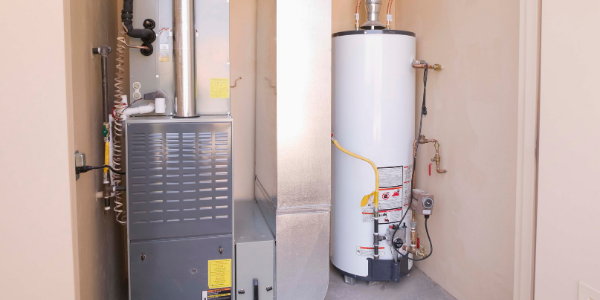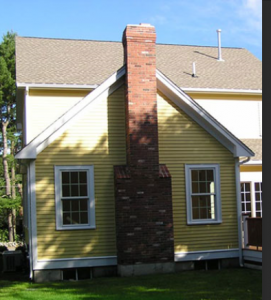Venting Systems for Mid-Efficiency Furnaces

By: Reggie Hucks | Mar 02, 2021
A vent is defined as a pipe or conduit that contains a passageway for conveying combustion products and air to the atmosphere. Products of combustion contain carbon dioxide, water, and sometimes carbon monoxide. Therefore, it is important to safely vent a gas furnace.
Modern gas furnaces are available with efficiencies that range from 80% to 98% Annual Fuel Utilization Efficiency (AFUE) ratio. Furnaces that are 90 to 98% AFUE are considered very efficient and utilize a category 4 vent system. This means that the flue gases operate under a positive vent stack pressure with a low vent gas temperature, causing the gases to condense before discharging from the vent. Venting materials used for category 4 furnaces are those recognized by the furnace’s installation instructions such as stainless steel, PVC, and ABS. Furnaces one tier lower in efficiency use more traditional venting methods than the 90+% units. Even though these systems are associated with conventional chimneys and vents, special attention must be given to their installation.
Mid–Efficiency Furnaces
Mid–efficiency furnaces are typically around 80% AFUE and use category 1 venting systems. This means that the furnace operates with a nonpositive vent static pressure (negative pressure). The vent gas temperature is just barely high enough to avoid excessive condensation before discharging from the vent. Mid-efficiency furnaces can be vented with Type B double wall vent, Type L vent, factory built all fuel chimneys, and masonry chimneys. While there are other specialized systems, such as mechanical draft exhausters, we will discuss the issues and concerns associated with traditional Category 1 venting systems on mid–efficiency furnaces: masonry chimneys, Type B double wall vents, and single wall vents.
Masonry Chimneys
 Mid–efficiency systems are designed to achieve no more than 82% AFUE for a reason. If this furnace is more efficient than 82%, excessive flue gas condensation will occur. Unlike the 90% AFUE systems, these furnaces are not designed to handle condensation and will rust excessively if they do. Conditions that cause flue gas condensation must minimized. Venting mid–efficiency units can be a real problem when including masonry chimneys as part of the venting design. Condensation associated with combustion is acidic and will severely damage tile lined masonry chimneys. Therefore, special consideration must be taken regarding the location, size, and chimney height, as well as furnace BTU input before any installation occurs. A fantastic venting resource is the International Fuel Gas Code. Venting systems for mid–efficiency equipment are prescriptive in the code with chimney location, size, and height requirements located in the Chapter 5 venting tables.
Mid–efficiency systems are designed to achieve no more than 82% AFUE for a reason. If this furnace is more efficient than 82%, excessive flue gas condensation will occur. Unlike the 90% AFUE systems, these furnaces are not designed to handle condensation and will rust excessively if they do. Conditions that cause flue gas condensation must minimized. Venting mid–efficiency units can be a real problem when including masonry chimneys as part of the venting design. Condensation associated with combustion is acidic and will severely damage tile lined masonry chimneys. Therefore, special consideration must be taken regarding the location, size, and chimney height, as well as furnace BTU input before any installation occurs. A fantastic venting resource is the International Fuel Gas Code. Venting systems for mid–efficiency equipment are prescriptive in the code with chimney location, size, and height requirements located in the Chapter 5 venting tables.
Type V Double Wall Vent
Type B double wall metal vent has been used on gas furnaces for years. It has a UL listed double lined metal jacket that works as an insulator to keep flue gas temperature from cooling quickly. It is approved as a category 1 vent material and can be installed to vent gas furnaces. Mid–efficiency furnaces utilize a negative draft to force vent gases outdoors. B vent is designed and listed to work under negative vent stack pressures which makes it suitable for these systems. Vent size and height must be calculated in accordance with all installation instructions (vent and furnace). It is important to note that Type B vents require a listed vent cap at the terminal end. If all installations requirements are followed, condensation issues can be minimized.
Single Wall Vent
Single wall vent is simply round metal galvanized pipe that meets the thickness requirement of the appropriate fuel gas code. Single wall pipe can be used as a vent connector that runs from a furnace to a Type B vent if it is in the same room. There are some exceptions, of course, but that is the accepted practice. Single wall pipe can also connect a furnace to a chimney, thereby known as the chimney connector. In some rare cases, single wall pipe can be used as the dedicated furnace vent. As a dedicated furnace vent, condensation can be a big problem. Therefore, vent locations are limited to venting out of a room directly outdoors and up the wall to terminate above the roof. This can only be possible in areas with moderate winter temperatures because single wall pipe gives up heat quickly. This fast heat transfer cools the flue gases and increases the likelihood of condensation. Checking the appropriate fuel gas code and furnace instructions is the best practice before installing single wall or any other venting system.
Make sure to always pay attention to installation instructions and safely vent a gas furnace.

